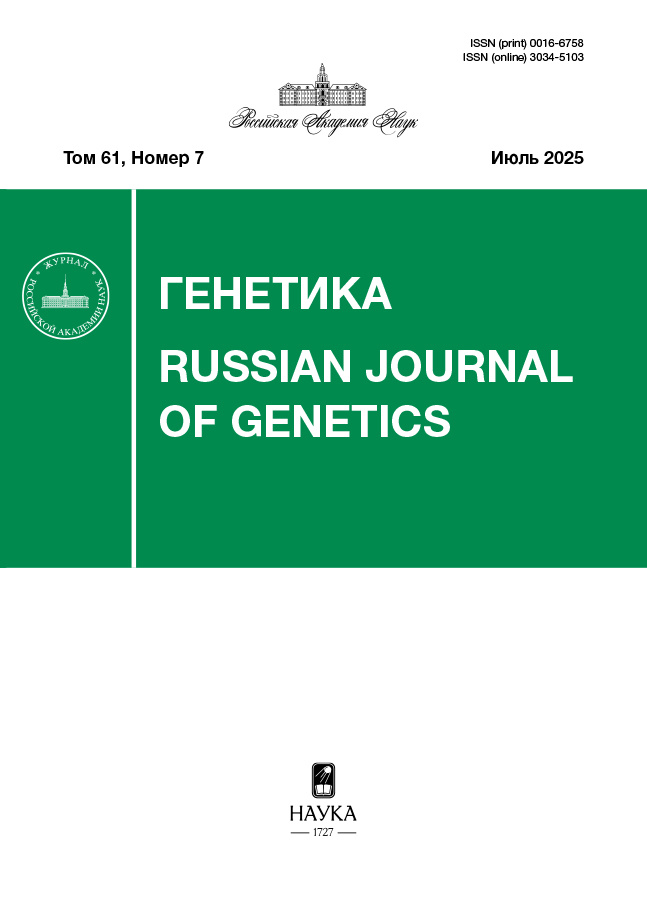Прогноз воспроизводимости эффектов для регрессий, построенных по топовым предикторам
- Авторы: Рубанович А.В.1
-
Учреждения:
- Институт общей генетики им. Н.И. Вавилова Российской академии наук
- Выпуск: Том 61, № 7 (2025)
- Страницы: 91-99
- Раздел: МАТЕМАТИЧЕСКИЕ МОДЕЛИ И МЕТОДЫ
- URL: https://medjrf.com/0016-6758/article/view/693618
- DOI: https://doi.org/10.31857/S0016675825070078
- ID: 693618
Цитировать
Полный текст
Аннотация
Предлагаются два простых метода прогноза воспроизводимости эффектов в тестовых выборках после проведения множественного регрессионного анализа выборки открытия. В частности, методы позволяют оценить возможность построения эффективных полигенных индексов риска (PRS, PGS). Используя теорию порядковых статистик, мы получили простую аналитическую формулу, оценивающую коэффициент детерминации для модели, построенной для топовых нейтральных показателей (). Это коэффициент детерминации при нулевой гипотезе, который зависит только от объема выборки, общего числа изучаемых предикторов (например, SNP-маркеров или уровней метилирования CpG) и числа топовых показателей, выбранных для построения регрессии. Сравнение наблюдаемого квадрата множественной корреляции для выборки открытия с позволяет достаточно уверенно предсказать воспроизводимость эффектов в тестовых выборках. Если наблюдаемый квадрат корреляции для выборки открытия в 1.3 раза больше , то в тестовых выборках можно ожидать по крайней мере половину исходного квадрата корреляции. Второй метод основан на аналогичном сравнении максимального коэффициента корреляции для выборки открытия с ожидаемой максимальной корреляцией для нейтральных признаков.
Об авторах
А. В. Рубанович
Институт общей генетики им. Н.И. Вавилова Российской академии наук
Автор, ответственный за переписку.
Email: rubanovich@vigg.ru
Москва, 119991 Россия
Список литературы
- Fan J., Lv J. A selective overview of variable selection in high dimensional feature // Space. Stat. Sin. 2010. V. 20(1). P. 101–148. PMID: 21572976; PMCID: PMC3092303
- Hastie T., Tibshirani Robert, Tibshirani Ryan. Best subset, forward stepwise or lasso? Analysis and recommendations based on extensive comparisons // Stat. Science. 2020. V. 35. № 4. Р. 579–592. https://doi.org/10.1214/19-STS733
- Christopher R., Genovese C.R., Jin J., Wasserman L. Revisiting marginal regression // arXiv:0911.4080v1 [math.ST]. 2009.
- Genovese C.R., Jin J., Wasserman L., Yao Z. A compa- rison of the lasso and marginal regression // J. Mach. Learn. Res. 2012. V. 13(1). P. 2107–2143.
- Leek J. Prediction: The lasso vs just using the top 10 predictors // Blog “Simply Statistics”. 2012. http://simplystatistics.tumblr.com/post/18132467723/ prediction-the-lasso-vs-just-using-the-top-10
- Freedman D.A. A note on screening regression equations // Am. Stat. 1983. V. 37. № 2. P. 152–155.
- Lukacs P.M., Burnham K.P., Anderson D.R. Model selection bias and Freedman’s paradox // Ann. Inst. Stat. Math. 2010. V. 62. P. 117–125. https://doi.org/10.1007/s10463-009-0234-4.
- Rubanovich A.V., Khromov-Borisov N.N. Genetic risk assessment of the joint effect of several genes: Cri- tical appraisal // Russ. J. Genet. 2016. V. 52. № 7. P. 757–769. https://doi.org/10.1134/S1022795416070073
- Alam К., Wallenius К. Distribution of a sum of order statistics // Scand. J. Stat. 1979. V. 6. № 3. P. 123–126.
- Rencher A.C., Pun F.C. Inflation of R2 in best subset regression // Technometrics. 1980. V. 22(1). P. 49–53. https://doi.org/10.2307/1268382
- Salt D.W., Ajmani S., Crichton R., Livingstone J.D. An improved approximation to the estimation of the cri- tical F values in best subset regression // J. Chem. Inf. Model. 2007. V. 47. № 1.
- Wray N.R., Yang J., Hayes B.J. et al. Pitfalls of predicting complex traits from SNPs // Nat. Rev. Genet. 2013. V. 14. № 7. P. 507–515. https://doi.org/10.1038/nrg3457.5
- Ahsanullah M., Nevzorov V.N., Shakil M. An Introduction to Order Statistics. Amsterdam–Paris–Beijing: Atlantis Press, 2013. 244 p.
- Nagaraja H.N. Contributions to the theory of the selection differential and to order statistics. 1980. Dissertation. Digital Repository @ Iowa State Univ. http://lib.dr.iastate.edu/rtd/6746/
- Cohen J.E. Statistical Power Analysis for the Behavio- ral Sciences. Hillsdale, N.J.: Lawrence Erlbaum Associates, Inc. 1988.
- Borinskaya S.A., Rubanovich A.V., Larin A.K. et al. Epigenome-wide association study of CpG methylation in aggressive behavior // Russ. J. Genet. 2021. V. 57. № 12. P. 1454–1460. https://doi.org/10.1134/S1022795421120048
- Koch S., Schmidtke J., Krawczak M., Caliebe A. Clinical utility of polygenic risk scores: A critical 2023 appraisal // J. Community Genet. 2023. V. 14(5). P. 471–487. https://doi.org/10.1007/s12687-023-00645-z
- Herzig A.F., Clerget-Darpoux F., Génin E. The false dawn of polygenic risk scores for human disease prediction // J. Pers Med. 2022. V. 12(8). https://doi.org/10.3390/jpm12081266.
- Benjamini Y., De Veaux R., Efron B. et al. ASA President’s task force statement on statistical significance and replicability // Harvard Data Sci. Review. 2021. V. 3(3). https://doi.org/10.1162/99608f92.f0ad0287
- McShane B.B., Gal D., Gelman A. et al. Abandon statistical significance // Am. Statistician. 2019. V. 73. Supl. 1. P. 235–245. https://doi.org/10.1080/00031305.2018.1527253
- Cheruiyot E.K., Yang T., McRae A.F. GWAS significance thresholds in large cohorts // BioRxiv preprint. 2024. https://doi.org/10.1101/2024.12.09.627629
Дополнительные файлы











